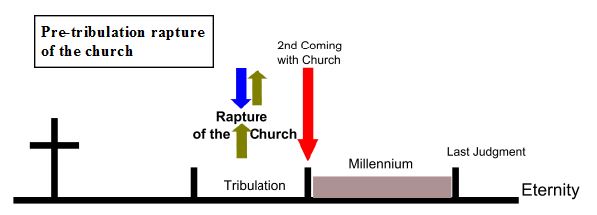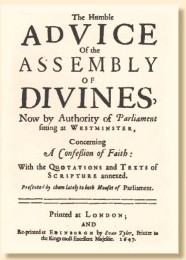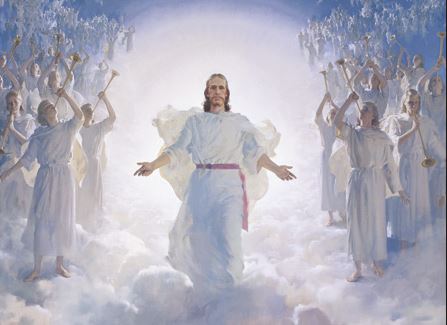 Related Articles
Related Articles
|
|
|
 Websites
Websites
|
|
|
|
|
Covenant Theology and Dispensationalism
Two contradictory and competing 'systematic theologies' have been, and remain very influential in shaping Christian belief and action.
 Note: The 'response' facility relating to this article is available to (logged on) site members only. Note: The 'response' facility relating to this article is available to (logged on) site members only.
Preface
The following article is a modified extract from an earlier article entitled 'A Covenant-keeping God'. The piece, which contains an overview of the major Biblical covenants, is itself part of a 'Drilling Down' series of articles (a 'work in progress').
-----------------------
Foreword:
Theological constructs;
frameworks of interpretation
(aka Systematic Theology)
REGARDING interpretational systems and frameworks or – to use the fancy term – hermeneutics, it is important to note the distinction between terms which are ‘theological’ and those which are ‘biblical’. Theological terms need to be treated with great caution.
Whilst these might be convenient in the discussion of key biblical themes and concepts (e.g. the term ‘Trinity’ as used in reference to the triune Godhead) these are essentially – in the grand sweep of history – neologisms.
They are essentially religious rather than biblical terms or, to use another word, ‘inventions’. They are often lacking clear definition and, across the Christian spectrum, experience differing levels of (dis)agreement and common understanding.
An example is the word ‘sacrament’. It is not found in the Bible and theologians have differed regarding the precise nature of a ‘sacrament’ and also what is (and isn’t ) covered by the term. (See New World Encyclopedia on the subject.) And the different opinions are not confined to the clichéd Roman Catholic/Protestant divisions. The Reformers Luther and Zwingli were famously in disagreement over Communion.
It is also important to differentiate between inductive learning and deductive reasoning. The former derives a view directly from (out of and formed by) the Bible text (exegesis): the latter is arrived at by a process of logic. For instance (and only for the sake of illustration) if it is held that God predestines some to salvation, then logic should dictate that God must, by extension, predestine some to a lost eternity. The use of logic can produce doctrines that are arrived at by eisegesis (reading into a Bible text from a particular and pre-suppositional theological framework).
Clever murder mysteries use 'deduction' to lead the reader or viewer on a false trail and to suspect the wrong person of the crime. (But of course Hercule Poirot's incisive and 'out-of-the-box' thinking shames the logic of we armchair sleuths every time.)
This is not to detract from the benefits of Systematic Theology which (in plainer language) is merely a themed approach to Bible study, but rather to highlight that theological suppositions should never be placed on a par with or, infinitely worse still, sit above the Word of God.
------------
Introduction
Two major theological systems -
(which contradict each other whilst also failing the Berean test: Acts 17:10-11).
 Caveat: Whilst focusing on particular interpretations, this is an 'equal opportunities' document in that it offers scope for a variety of opinions right across the theological spectrum. Caveat: Whilst focusing on particular interpretations, this is an 'equal opportunities' document in that it offers scope for a variety of opinions right across the theological spectrum.
In the Christian community across the world there are a variety of theological positions. However two of these have gained widespread support and – whilst disagreeing with one another – have both been highly influential in the formulation of belief. And it is important to stress again that these are theological constructs. The earliest of the two has been termed ‘Covenant Theology’ (mainly formulated and codified in the 17th century; see Footnote): the other being ‘Dispensationalism’ (with its origins in the 19th century).
The former is a central plank within Presbyterian churches around the world and across the (Presbyterian) denominational spectrum. The latter originated in the UK (pioneered by those within what became the Plymouth Brethren), but crossed the Atlantic to become hugely influential in the late 19th century. Dispensationalism informed the belief of the pentecostal churches at the start of the 20th century and has, since then, expanded both denominationally and geographically.
Covenant Theology

Covenant Theology (CT) developed two principal terms to describe its dual covenant interpretational framework viz. a Covenant of Works and a Covenant of Grace. (Some argue that there is only one covenant – the Covenant of Grace. Others include a Covenant of Redemption between the Father and the Son.) These theological terms have been employed to develop a whole range of doctrines and, because of the influence that they have had, we will (d.v.) come back to these later in more detail.
However, for the moment, and with reference to the most common 'dual-covenant' view – developed first by Dudley Fenner, an English Puritan, in 1585; and then Scottish theologian Robert Rollock (1555 - 1598) – it is sufficient to say that the (theological) Covenant of Works is used to denote the period prior to the Fall in the Garden of Eden. In simple terms the Covenant of Works would say: “If Adam and Eve had obeyed the instructions given to them then they would have been OK. “ However Adam and Eve didn’t, so God had to embark on Plan B – the Covenant of Grace.”
This term – again simply speaking, but remembering that it is a theological expression, not a biblical, one – covers the continuous period from the Fall until the final consummation and Kingdom come.
However this span of time is (it is argued) should be split into two ‘administrations’ (again a non-biblical term); basically delineated by the Old Testament (OT) and the New Testament (NT) periods. In these two ‘administrations’ (it is said) God applied the same principles but in two different situations and in two different ways to the one people of God. These were Israelites in the OT and believers (Gentile and Jewish) in NT times.
Whilst this is a convenient hermeneutic, it is not biblical. The nation of Israel was in effect a theocracy within which some were in communion with God (cf Heb. 11) while others very obviously, were not. In contrast the church (in the true sense of the bride of Christ) comprises solely of people in blood-bought communion with God.
So 'OT Israel = OT expression of church' is both overly-simplistic and grossly misleading . As a corollary, 'Church = Israel' is also untrue. (More on this below.) But as Covenant Theology has been widely accepted as ‘biblical’ it has led directly to (for instance) infant baptism. Accordingly paedobaptism is claimed to be the NT equivalent of circumcision – even though circumcision was never the symbol of salvation and union with God; and was only ever applied to males. [Again, more on this at later date (d.v.) when looking at 'Who are Abraham's seed?']
One of the other principal, and even more serious, mistakes deriving from Covenant Theology has led to what is commonly called ‘Replacement Theology’. This ‘theology’ – also termed Supercessionism – teaches that the Jews have now been ‘replaced’ by the mainly-Gentile church and (therefore, by deduction and logic) the promises to the Jews have now either all been fulfilled or spiritualised; or will find any contemporary or future fulfillment in the church. (So for instance many older Bibles have chapter headings for Isaiah 59 as “God’s curses on the Jews” and Isaiah 60 as “God’s blessings on the Church”.)
The ‘replacement’ view is most emphatically rejected by Paul in his letter to the (Jewish and Gentile) church at Rome. In fact this is his core message (Rom 11:1-2; 11-12) and the underlying reason for writing this – his longest – letter.
Dispensationalism

In contrast to Covenant Theology the other system of interpretation that has attracted widespread support is that of Dispensationalism.
There is a view that Dispensationalism (as distinct from, but embracing pre-millennialism) has its genesis in a Scottish believer (Margaret Macdonald; 1815-1840) and a Church of Scotland minister (Rev. Edward Irving; 1792-1834). What is undisputed is the fact the John Nelson Darby (founder of the Plymouth Brethren as a distinct grouping with its roots in the wider Brethren movement) is the latter-day father of this theological system. Darby took his pre-tribulation rapture teachings (the removal of believers from the earth prior to the return of Christ and before the ‘great tribulation’ of Matt. 24) to America where they were enthusiastically embraced by a lawyer called Cyrus I. Scofield (1843-1921).
Scofield in turn produced the Scofield Reference Bible (first published 1909) which is annotated throughout in support of Darby’s interpretations – especially with reference to eschatology, the end-time prophecies and events regarding Christ’s return. The Scofield Bible has been hugely influential right through to the present day – in America and right around the world. The teachings are now being propagated through the Moody Bible Institute in Chicago, Dallas Theological Seminary, and more than 200 other lesser-known Bible institutes..
Dispensationalism divides history into sections, covering the periods of Innocence, Conscience, Civil Government, the Patriarchs, the Law, Grace (the church age), the Millennium and the final consummation leading to the everlasting kingdom. However, and perhaps because this theological system lacks biblical warrant, there is a range of opinions (disagreement) on how many dispensations there are (varying from three to eight) and where, in history and in Scripture, the dividing lines lie.
But irrespective of the number of dispensations, the agreed assumption is that God has dealt differently with his world and its people in each of these different dispensations. Accordingly then, a different hermeneutic needs to be applied to the different portions of Scripture which cover these different periods of time.
What is also generally agreed is that the church age is a parenthesis – a defined interlude – in God’s overall plan of salvation i.e. in the OT God is dealing through the Jews while the NT is the time of the Gentile church until Jesus’s rapture of the saints (with a pre/post/mid-Tribulation rapture range of views) . This will usher in a further period of God again dealing with and through the Jews.
Dispensational teaching has been greatly popularised and adopted through hugely-influential and best-selling books like Hal Lindsey’s ‘The Late Great Planet Earth’ (1970) and the ‘Left Behind’ series of novels by Tim LaHaye. The Left Behind books – the first in the series appeared in 1995 – have sold over 50 million copies, and have been turned into a cinema production. The books are freely available from and often prominently displayed in Christian bookshops.
As stated earlier, the core element of these novels is the ‘pre-tribulation rapture’ which, as already stated, teaches that all Christians will be suddenly and without any warning removed from the earth prior to the return of Christ. (See Footnotes.) However, and apart from the wider Christian community, even within the Brethren camp there was disagreement. George Mueller (of Bristol Orphanage fame) broke with Darby over this issue. The great Baptist preacher C.H. Spurgeon also declared the teaching to be unscriptural. Nevertheless the doctrine has persisted.
In summation...
Both Covenant Theology and Dispensationalism have been and continue to be highly influential in formulating Christian belief, but both are disputed.
Covenant Theology dismisses swathes of end-time prophecy as irrelevant or allegorical, and sees no place in God’s final purposes for the Jews other than (perhaps) a final ingathering as outlined in Romans. In terms of latter-day expectations prior to the return of Jesus, the former implicitly teaches a universally positive response to the Gospel (reading more into Matt. 24:14 than the verse allows; cf Matt 7:14).
Meanwhile, though recognising the prophesied 'time of great trouble' (Dan 12:1; Matt 24; 2 Tim. 3:1-12), Dispensationalism (in pre-tribulation rapture form), teaches that believers will be spirited away, leaving the Jews to face the music of Satan’s final onslaught. (See Footnotes.)
So while the Gentile believers look down from a safe vantage point in heaven (as God's 'heavenly people'), the Jews will be God's latter-day 'earthly people' who will suffer greatly but endure through the Great Tribulation. Within the Dispensationalist view, Matthew 24 (et al) and, for some, Revelation chapters 4 - 19 are seen as only of academic interest – given the belief that the Gentile saints will be in heaven during that period.
Regarding God’s end-time purposes for the Jews, Dispensational Theology cannot get the church and Israel together, whereas Covenant Theology cannot get the church and Israel apart. The former sees the Jews and the church as totally different entities separated by ethnicity and end-time progression, whereas the latter see Israel and the Jews as essentially an earlier expression of the church, differentiated only by two separate and distinct ‘administrations’ of time (OT/NT) in God’s grace. In fact Israel was/is a physical nation comprising the saved and the lost (Rom 9:7), whereas followers of Christ are a spiritual nation made up exclusively of the redeemed (Gal 3:7,8; 1 Pet 2:9).
At the very least it can be confidently stated that because these two systems disagree markedly with one another, they cannot both be completely right. (And it could be argued that in critical issues they are both wrong.) Yet both of these systems have created expectations and assumptions which could leave believers scripturally askew; vulnerable through false hopes; and ill-prepared to understand the times and the purposes of God in our day as the cosmic upheavals preceding Kingdom Come drawn ever nearer.
At the risk of vain repetition, the theological systems of Covenant Theology and Dispensationalism lack Biblical support in major areas of doctrine, theology and eschatology. Moreover they profoundly disagree with each other on very significant points – especially concerning the times preceding the coming again of Christ; the place of, and God’s purposes for the Jewish people; and the establishment of His everlasting kingdom.
Footnotes:
1. Pre-Tribulation Rapture of the church as taught by most Dispensationalists. The view held is that Christ will have two comings: the first will be invisible 'for the saints' and the second 'with the saints'.

-------------------
 2. The Westminister Confession of Faith (1644) codifies much of what is described as 'Calvinism' and is subscribed to as a 'Subordinate Standard' by Presbyterian denominations worldwide. 2. The Westminister Confession of Faith (1644) codifies much of what is described as 'Calvinism' and is subscribed to as a 'Subordinate Standard' by Presbyterian denominations worldwide.
The document is predicated on so-called 'Covenant Theology' and contains material which is, in the broad sweep of the formulation Biblical, extra-biblical, and unbiblical representing Truth mixed with error.
It is also deficient in failing to cover some some major biblical themes: making bare mention of the person and role of the Holy Spirit, and with no mention of the Great Commission.
3. The Millennium
 Broadly speaking Reformed (Covenant) theology teaches the Millennium as being a definite period prior to the coming again of Christ at the end of the age. However, the early church believed in a literal Millennial reign of Christ on earth. Broadly speaking Reformed (Covenant) theology teaches the Millennium as being a definite period prior to the coming again of Christ at the end of the age. However, the early church believed in a literal Millennial reign of Christ on earth.
While many today share this latter view, not all who do are Dispensationlists (i.e. all Dispensationlists are pre-millennial but not all Pre-Millennialists adhere to Dispensationalism). See article The (Coming) Millennium by a Scottish lay preacher and city mission superintendent. |
The Editor, 30/07/2013
|
(page
1
2
3
4
5
6
7
8
9
10
11
12
13)
| |
|
Colin Ford (Guest) |
06/08/2013 21:28 |
John,
Of course the Bible teaches a "rapture", though as we know the word "rapture" is NOT in the Scriptures. And without going into a lengthy exegesis in the original Greek; there certainly is an act of being "caught up into the air" 1 Thessalonians 4.17.
In many ways the Rapture has become the "Blessed Hope" Titus 2.13, rather than the Second Advent; and the Bible teaches that the Second Coming is prophesied in 1 Thessalonians 4.16-17, 1 Corinthians 15.52 and Matthew 24.30.
Regarding the word "shout" 1 Thessalonians 4.16; in the Greek (keleusma) this means more than a loud noise, it is a battle command. So why a battle command, if there is no battle seven years before the Day of the Lord? I also have some very elaborate charts and diagrams by pre trib theologians (Clarence Larkin; I believe originated them). They all place the rapture seven years before the Second Advent; thus teaching that we shall know when it will be; Matthew 24.36.
Added to this, does not Matthew 28.19-20 require us to be witnesses until the end of the age? Not until seven years before the end?
It IS the timing of the being "caught up" that is in question, not the event itself.
Again, the Bible clearly teaches that events have to happen first, before the "rapture" it is not an imminent, or any moment event.
I shall, God willing, add a little more tomorrow on the "to meet the Lord in the air", as many are confused as to "why would we be caught up, if we come straight back down again".
|
| |
|
Editor |
07/08/2013 19:54 |
Colin, I have accepted your apology for going 'off topic' on your last post (and deleted same).
Look forward to your continuing 'on topic' contributions.
|
| |
|
Editor |
07/08/2013 20:57 |
And earlier post spoke of 'the Day of the Lord'. But when (in the chronological sequence) is that 'Day'? Is it a single day (cf Zech 14:1-9) or does it refer to a span of time?
Is the reference in 1 Thess 5:2 the same event as 2 Pet. 3:10? Are there many different 'Day(s) of the Lord'?
Mal 4:5 speaks of the reappearance of Elijah (or someone in the spirit of Elijah)and also cosmic disturbances BEFORE the 'Day of the Lord' (Joel 2:30,31; Matt 24:29; Acts 2:20)
and only then the visible return of Christ (Matt 24:30; 1 Thess. 4:16-17).
If (and it is an 'if') all these references refer to one event then the doctrine of 'imminence' is clearly under threat.
Pre-trib heavyweight John Walvoord has stated: "The fact is that neither Post-tribulationism nor Pre-tribulationism is an explicit teaching of Scripture. The Bible does not, in so many words, state either".
|
| |
|
Colin Ford (Guest) |
07/08/2013 21:28 |
The "Day of the Lord" is the 1000 year or millennial reign.
The "Doctrine of imminence" isn't under threat; it is not taught in Scripture.
Mr Walvoord would say that! Wouldn't he? After all the stuff that he has written!
|
| |
|
Editor |
07/08/2013 22:18 |
"The "Day of the Lord" is the 1000 year or millennial reign."
That is surely one valid interpretation, however it is equally surely not the only one.
|
| |
|
Colin Ford (Guest) |
07/08/2013 23:08 |
With regard to the word "meet" in 1 Thessalonians 4.17, it is used three times in the New Testament.
I can do no better than to quote Mr Rowlands;
"The word used here for "meet" is a pre-Christian one, of the 'koine' or common Greek. It implied the welcoming of a great personage on his arrival...
It is the same word which is used of the Wise Virgins who went out to 'meet' the Bridegroom".
In the three times that the word "meet" is used in the NT, in each instance the thought is the same. In Matthew 25.6 it is when at MIDNIGHT the cry goes forth, "Behold the Bridegroom cometh" that this word for meet is used. It is not used in verse 1 where they went out to meet him, but while he tarried they all slumbered and slept. It is the word used only when the midnight cry goes forth, Behold! and the Bridegroom was actually on his journey-so much so that only those that were then ready could go with him into the marriage. The Wise Virgins alone met him so as to conclude HIS JOURNEY WITH HIM. Likewise in Acts 28.15 the word is used in a simple historical manner, viz., when the brethren living in Rome heard that the Apostle Paul was coming to Rome, they went out as far as the Market of Appius to meet him (apentesin)in order to conclude HIS JOURNEY WITH HIM. So-and in no other way-when our Lord is coming with all the Hosts of heaven, the dead and living saints (in glorified bodies)will be caught up to meet Him (apantesin).
So; "WE SHALL MEET HIM ON HIS WAY"
In Matthew 25 the Bridegroom is not represented as coming for the purpose of meeting the virgins, but the reverse! In Acts 28.15 it was not Paul journeying to meet the brethren of Rome in order to return with them to Jerusalem from which he set out, but the reverse. It was they who went out to meet him so as to conclude his journey with him to Rome, the place of his destination. Likewise in 1 Thessalonians 4.17, it is not the Lord coming to meet His Church that is emphasised, but the reverse.
Be it noted that the well known expression about our Lord's coming to the air is no where to be found in Holy Scripture. Nowhere does this or any other Scripture speak as if the air would be the terminus of Christ's journey on this occasion; but in the same way that the five wise virgins went to meet the bridegroom when the midnight cry arose and conducted him on his way; in the same way that the brethren in Rome went to meet Paul in order to accompany him on the rest of his journey into Rome -even so shall we be caught up ...to meet the Lord in the air. For Him to be COMING TO THE AIR would be one thing, but for His redeemed to be "caught up...to meet Him in the air" (as Scripture says they will) is quite another.
Well did Miss Frances Ridley Havergal put this thought in her well-known hymn:
"Thou art coming:
We shall meet THEE ON THY WAY."
The divine emphasis is not on Him coming to meet us, but we being caught up to meet Him.
Christ is the centre of all the glory IN THAT DAY.
|
| |
|
John Miller |
08/08/2013 16:21 |
Colin reviewing this exchange of thoughts I came across your suggestion that i have been influenced by a book written by Arthur Pink. Let me disabuse you of that notion. I have not read any book written by Arthur Pink nor have I heard it spoken about or discussed.
If I may I would like to look at 1 Thess.4:13-18 give my understanding of it as I have done elsewhere. The great theme of these verses is the resurrection of the dead in Christ, the change from bodies of humiliation to bodies of glory and the taking up to heaven of the church, there vto await the return of Christ to earth in glorious majesty although the latter is not mentioned in this passage.
In v.14 we have a woderful statement. The Lord Jesus to initiate this event will bring with Him those "who sleep in Jesus". The miserable doctrine of "soul sleep" has no foundation in scripture and the bodies of those to whom this statement refers are still in the grave. We therefore must understand from these words that Jesus will bring with Him the spirits of the dead in Christ to be united to raised, changed bodies. This is a wonderful thought and corresponds with Christ's own resurrection as the "firstfruits" (1 Cor.15:23). At the moment of His death His spirit was received by the Father, just as ours are received by Christ Himself. At the moment of resurrection the dead body of Jesus, and I write with the utmost reverence, was once again inhabited by His spirit and in His resurrected body He left the tomb. As with Christ, the empty tombs/graves of all believers who have died in faith will be eloquent testimony to resurrection.
The purpose of this wondrous event prophesied by Paul is to take the church, Christ's heavenly Bride, presently indwelt by the Holy Spirit of God, out of the world before God allows evil to be unleashed on its Christ rejecting population. in 2 Thess.2:6,7 Paul speaks of the present restraint of the Holy Spirit in the church holding evil in check and of the consequences of His departure.
Throughout the ages God has reserved to Himself the right to take into heaven without passing through the article of death, those whom He has selected. He did this with Enoch before the flood and with Elijah. No one saw Enoch go as far as scripture records and only Elisha was granted the unique privilege of witnessing his master's translation.
Now the prospect of going to be with Christ, the salvation of the body, has been the eager anticipation of every generation of believers. V.15 shows that it was so with Paul. He is making it clear to the Thessalonian church that they were not to fear that any would be left behind when Christ came for his own and that death would be no threat.
Nowhere in this short passage of scripture wher Paul gives such a detailed account of the event does Paul say that the Lord returns to the earth at that particular time. V.17 tells us that we will all be caught up together in the clouds and we will meet the Lord in the air. We will then be forever with the Lord.
Colin your explanation of the meaning of this meeting is not based on scripture. To use the fact that the same Greek word is used in Matt.25 and Acts 28 in completely different circumstances as a basis for your belief is really stretching the imagination. If we take your analogy to its conclusion the wise virgins would then have returned with the Bridegroom to the scene of their work in gathering the oil to confront with Him the foolish virgins. Scripture tells us that they went in with the Bridegroom and 6the door was shut, an interesting thought surely!
The meeting with Paul was an expression of their love and appreciation of the aged Apostle and was initiated by them at a time of their choosing. It bears no resemblance to the rapture of the church that is presented in 1 Thessalonians.
The literal meaning of the Greek in this verse is "for a meeting" (Gr. eis apantesin). I do not have your extensive knowledge of the Greek but do have this fact on impeccable authority.
Your belief is that in the twinkling of an eye we will be caught up with the Lord and just as quickly be brought back down to earth. There is no other explanation.
There are references to this event embedded in many scriptures and we can examine them later.
If you are correct the raptured church will swiftly and immediately be brought back down to earth to the Mount of Olives (Zech.14:4). Is this what you believe?
Leaving all this aside I recognise that you are sincere in your beliefs and there is not any suggestion in my mind that our differences in the understanding of this matter separate us in the faith of our Lord Jesus Christ.
Finally, for the moment, I could quote many hymns that show the belief of many servants of Christ in the scriptural truth of the rapture. For example:
"But Lord 'tis for thee for thy coming we wait,
The sky not the grave is our goal,
Oh trump of archangel,
Oh voice of the Lord,
Blessed hope! Blessed rest of my soul!
H.G.Spafford (1828-88)
|
| |
|
Editor |
08/08/2013 21:15 |
Colin and John, Would it be correct to say that the difference between your respective views relates to whether Christ takes his saints to heaven or to earth?
As a 'by the way' I remember one commentator describing 1 Thess 4:16 as being one of the noisiest verses in the Bible.
|
| |
|
John Miller |
08/08/2013 22:18 |
As far as I can tell from my reading of the Bible, not from any other source, I believe First Thess.4 tells us that at the moment described by Paul the saints are taken up to heaven. Colin can speak for himself.
Your quoted commentator may well be accurate in his description. I believe that testimony to what has happened will remain for the unbelieving world to hear and see but as with the Lord's resurrection, lies of the Devil will immediately be spread to deceive and cover up the truth. Many of course will be in a state of bitter remorse having heard and understood the Gospel, but not received it in faith. This is a most solemn consideration.
|
| |
|
John Miller |
08/08/2013 22:22 |
Another solemn and frightening thought for such as I described in my last paragraph is that the Devil will know that he has a very limited time left in which to wreak his cruelty and destruction on his newly found domain. He knows and understands the scriptures. Make no mistake of that!
|
(page
1
2
3
4
5
6
7
8
9
10
11
12
13)
|
|
|